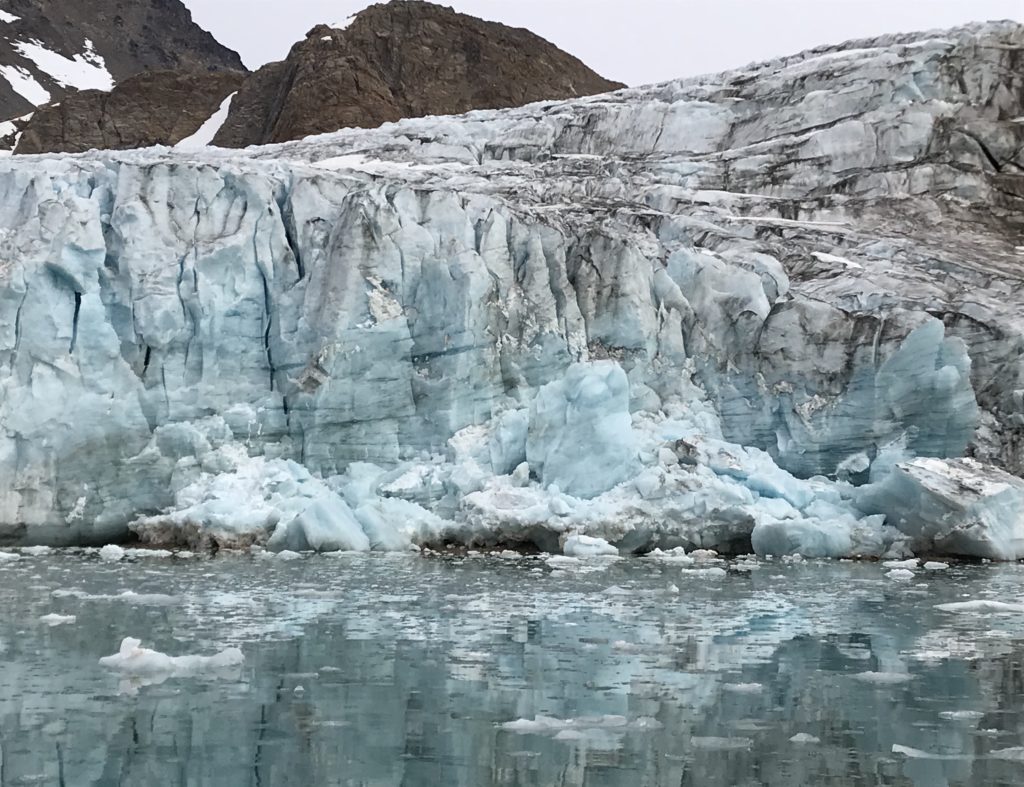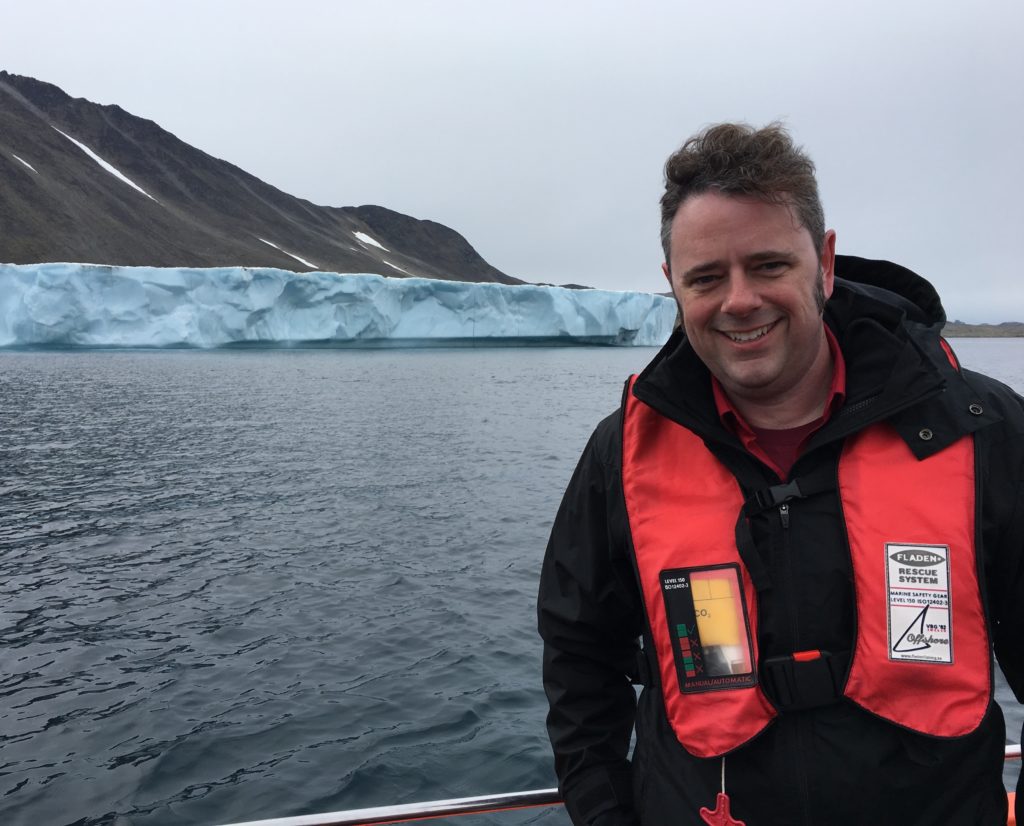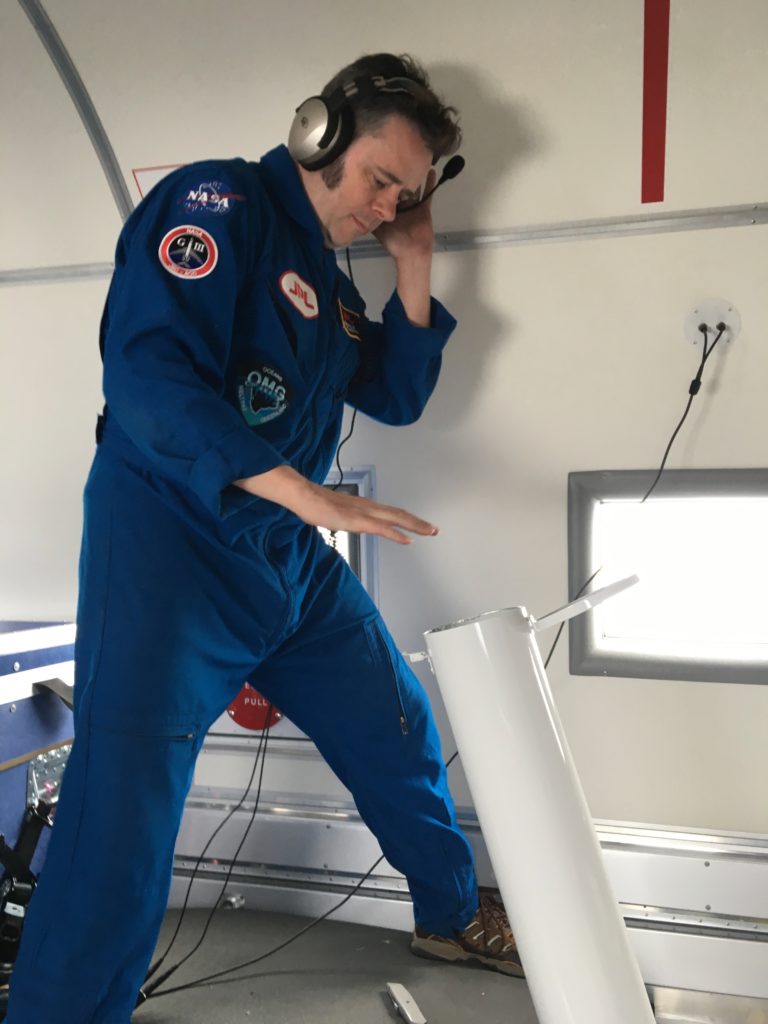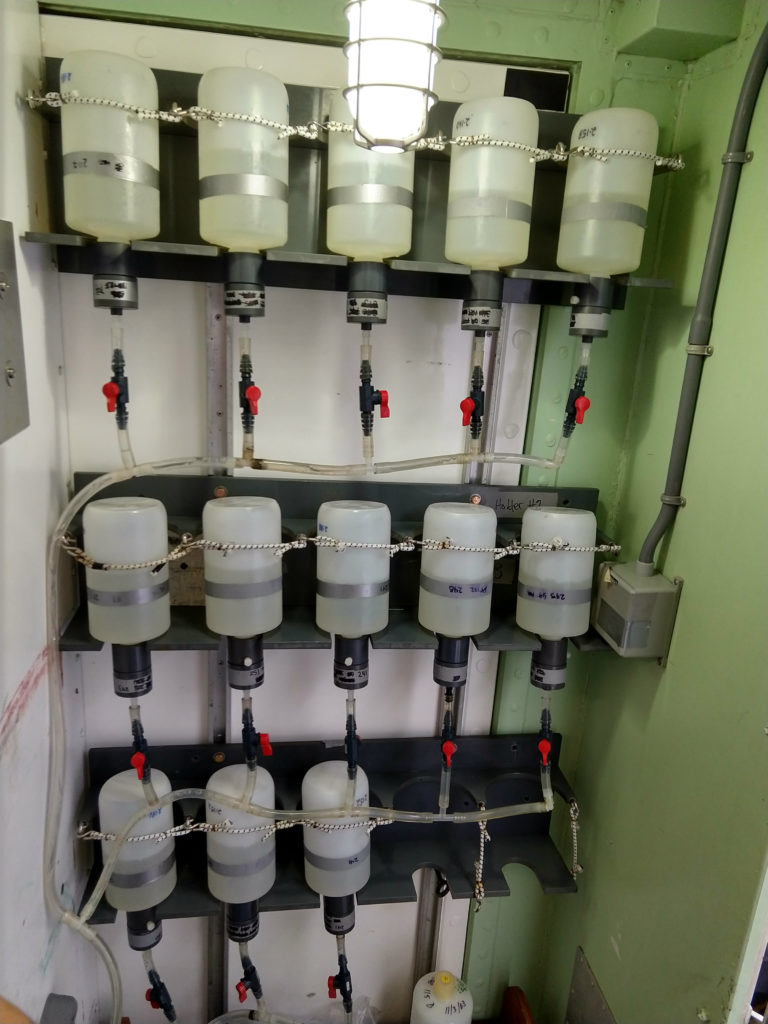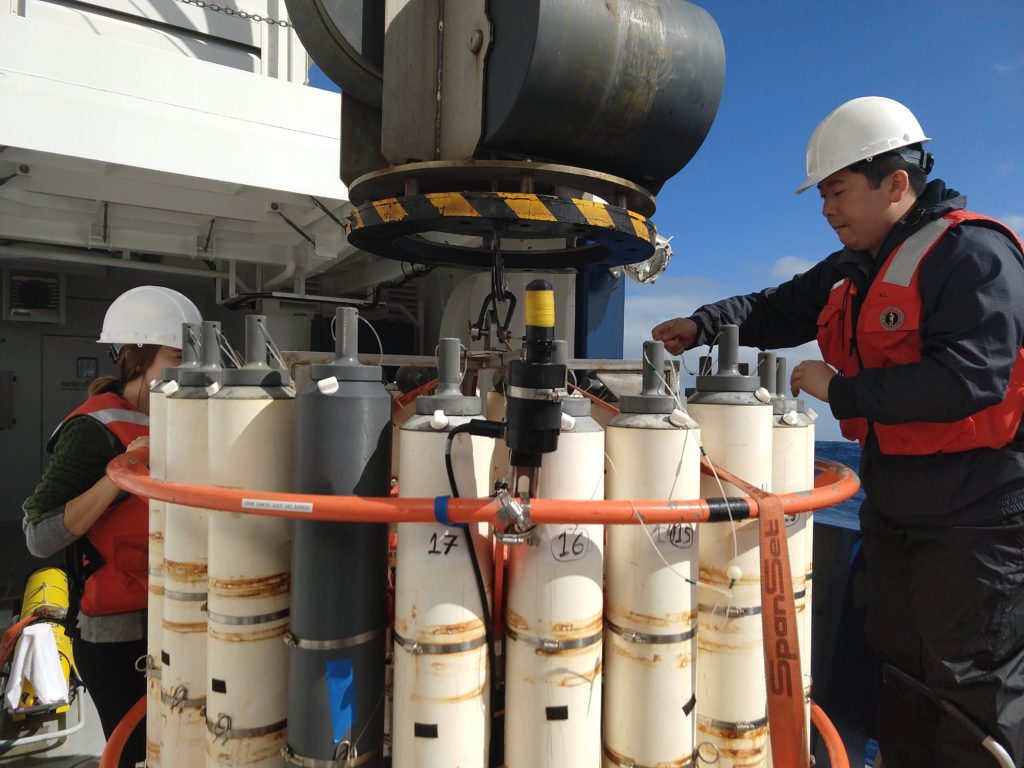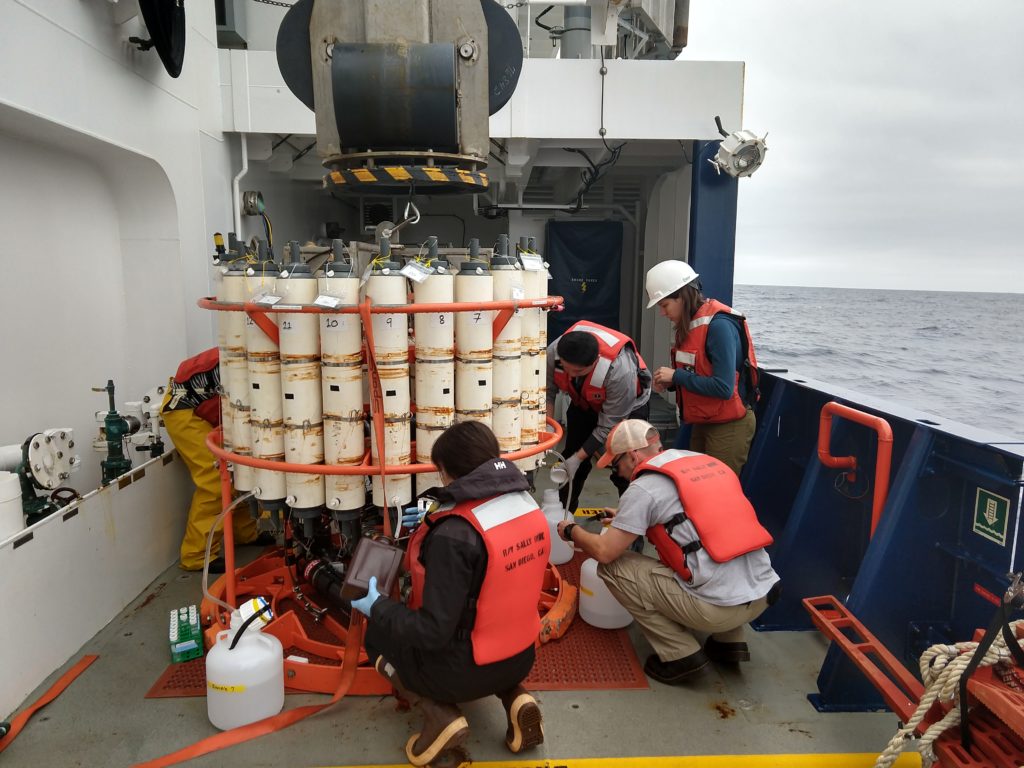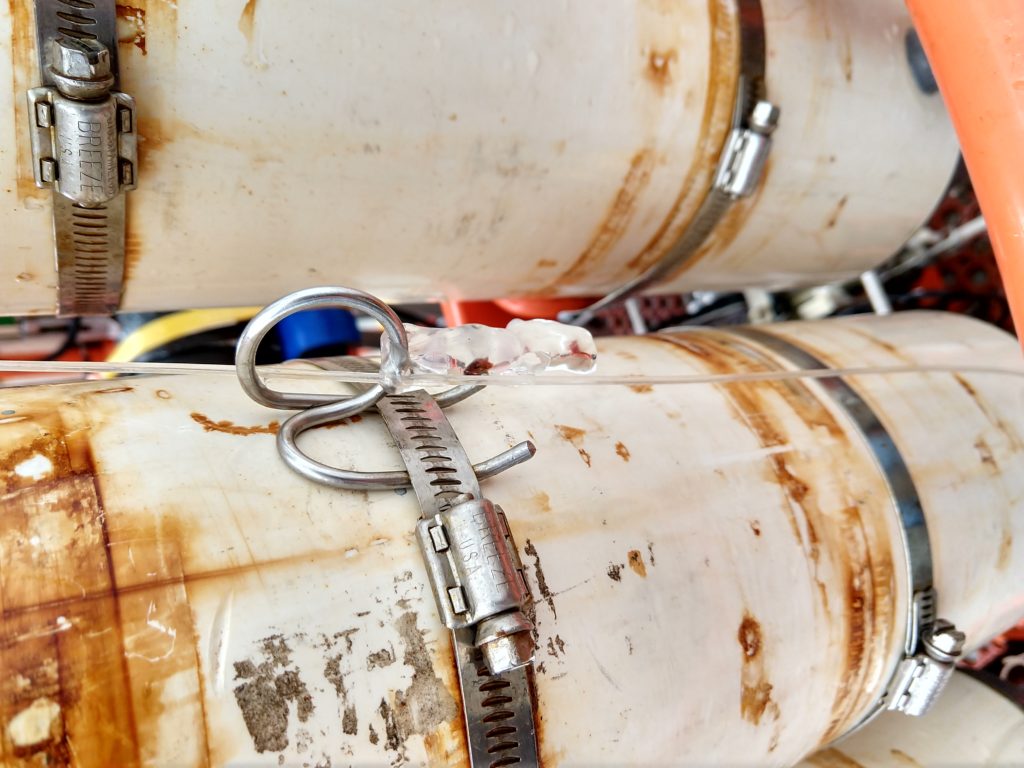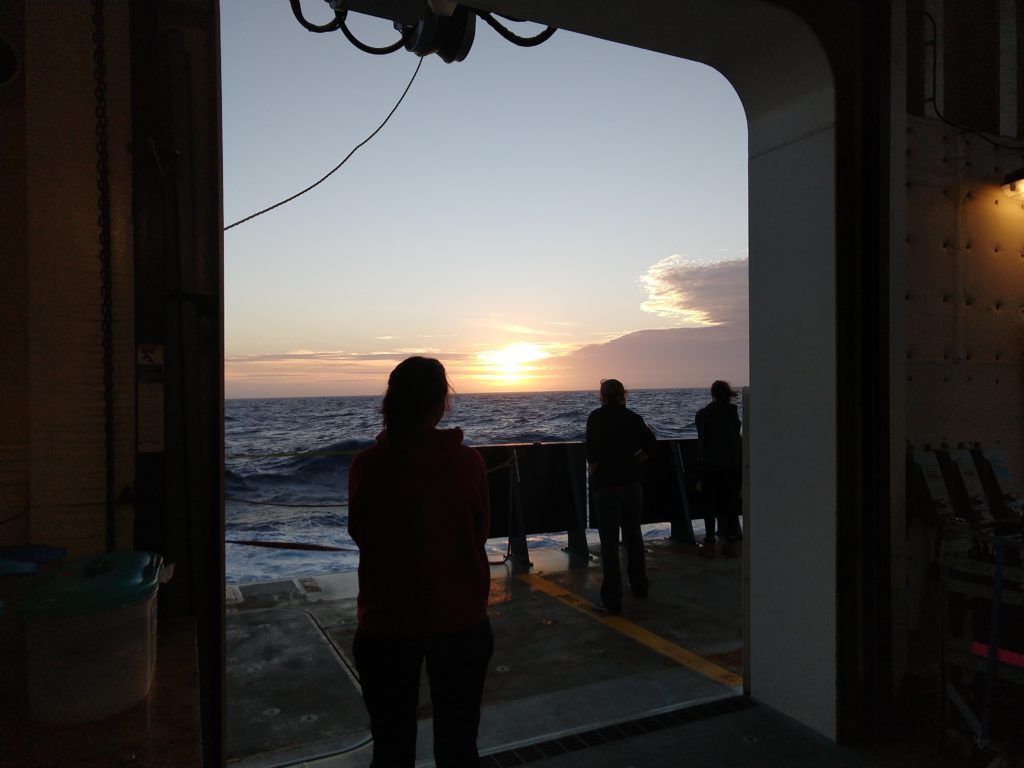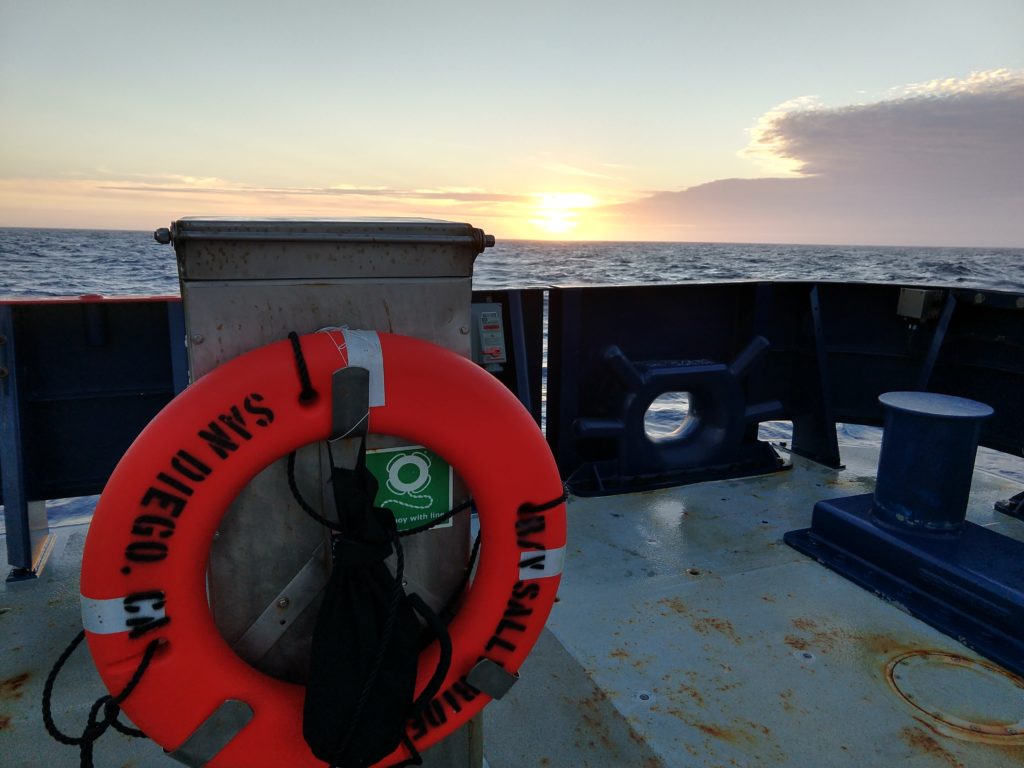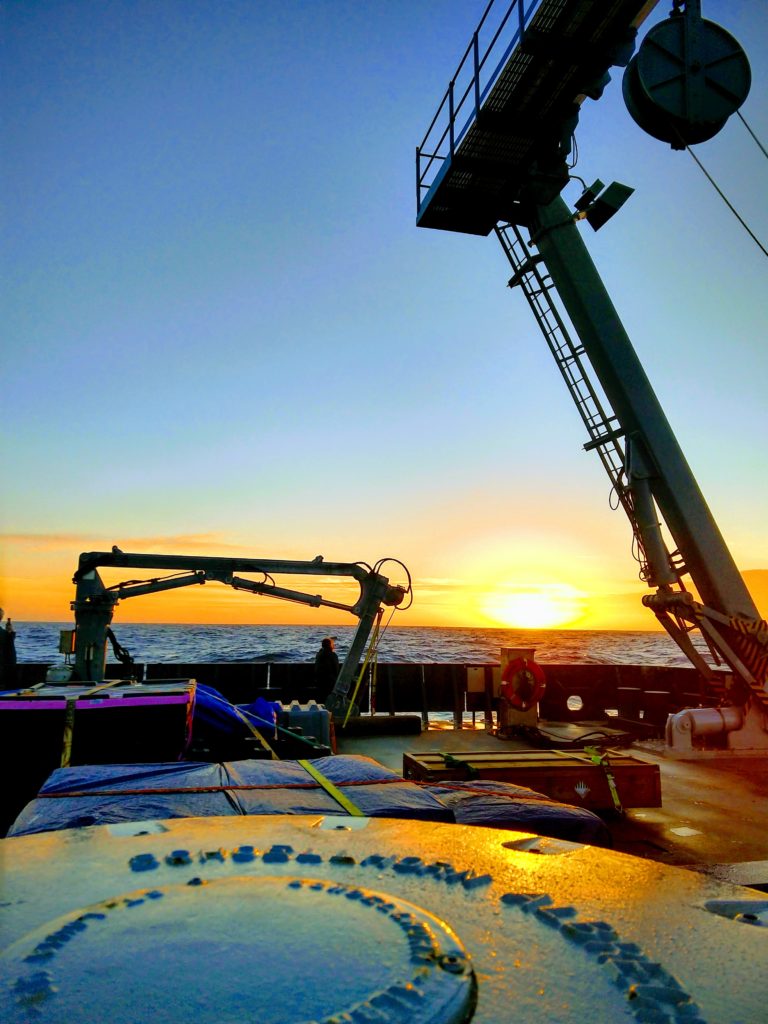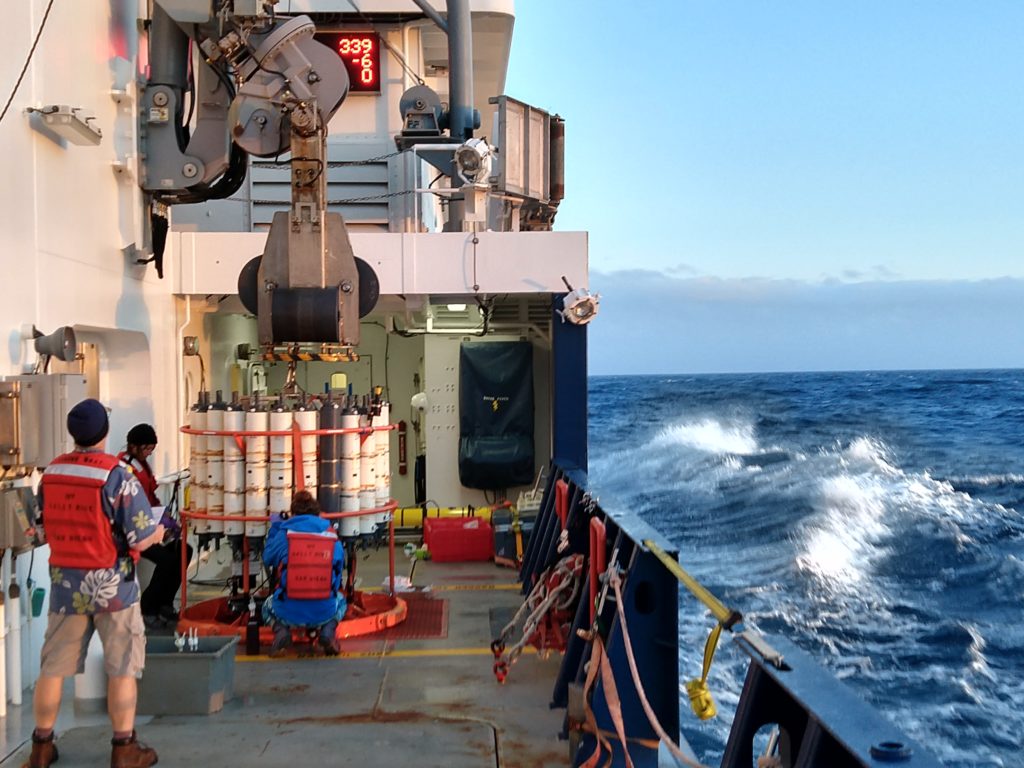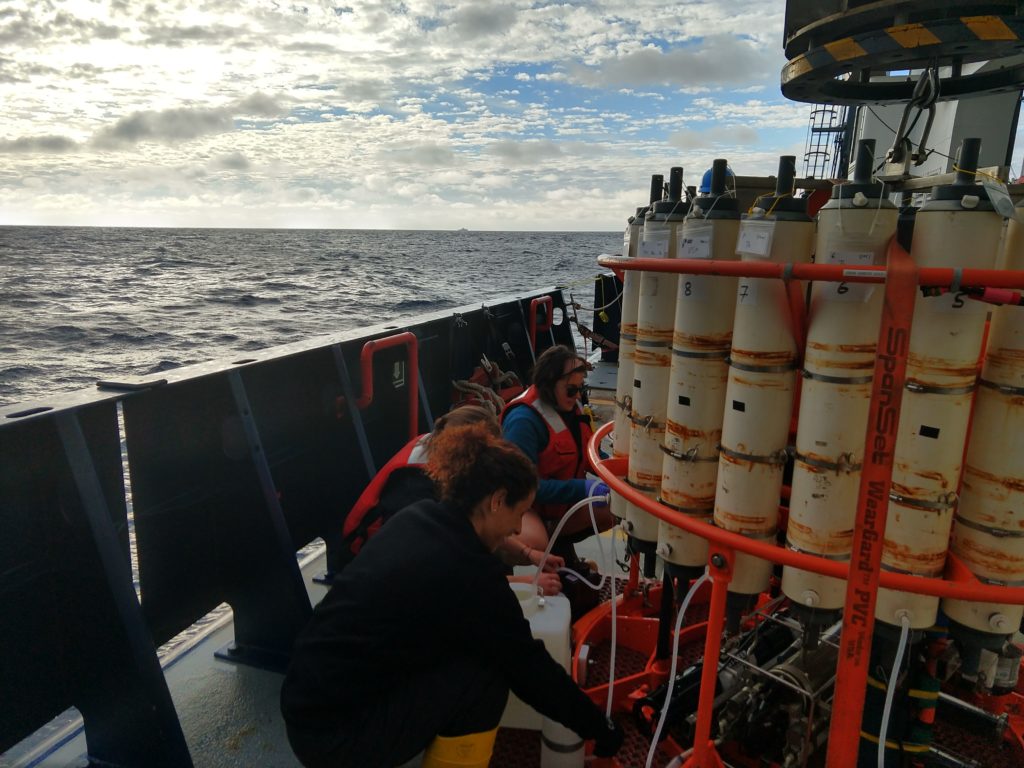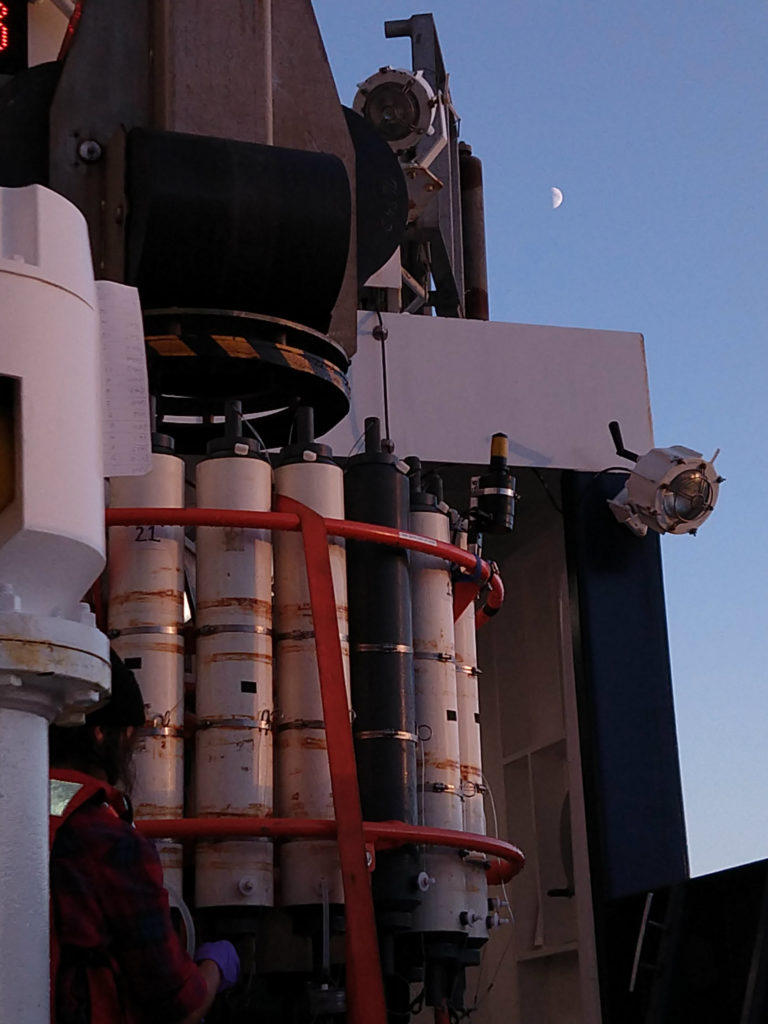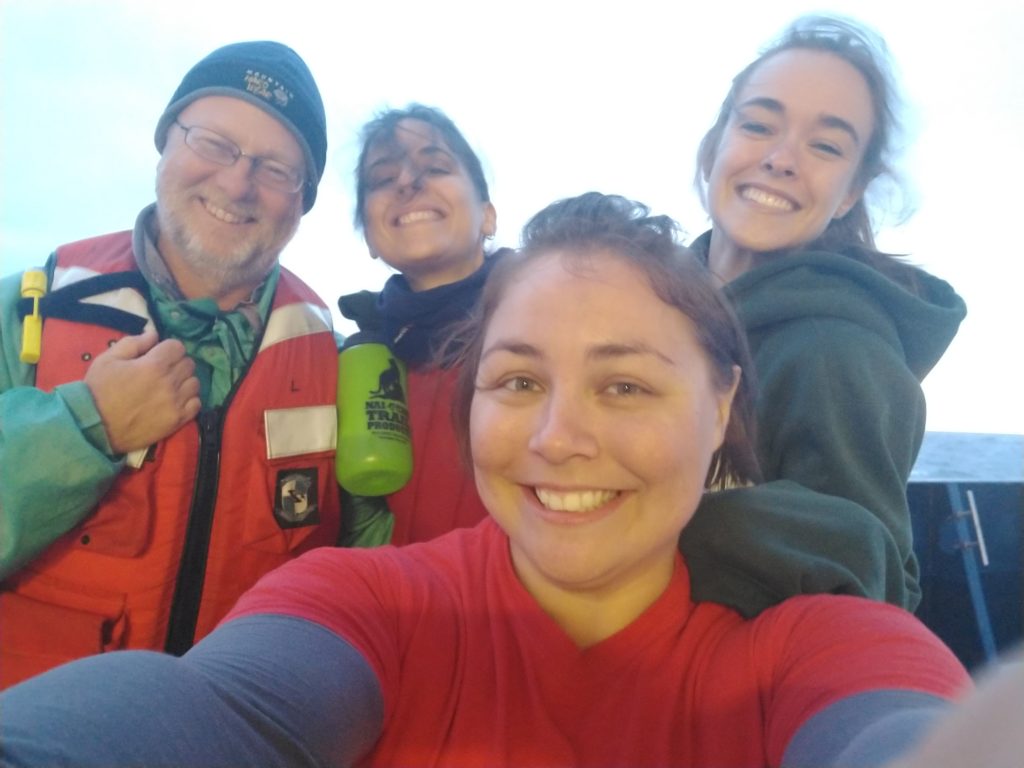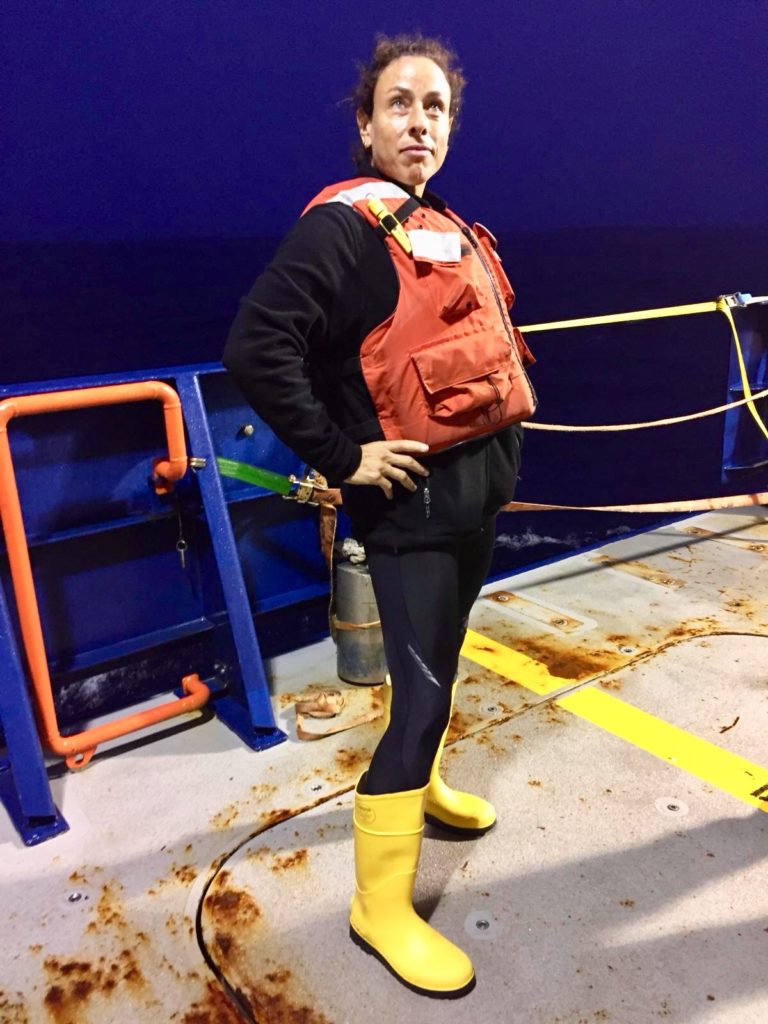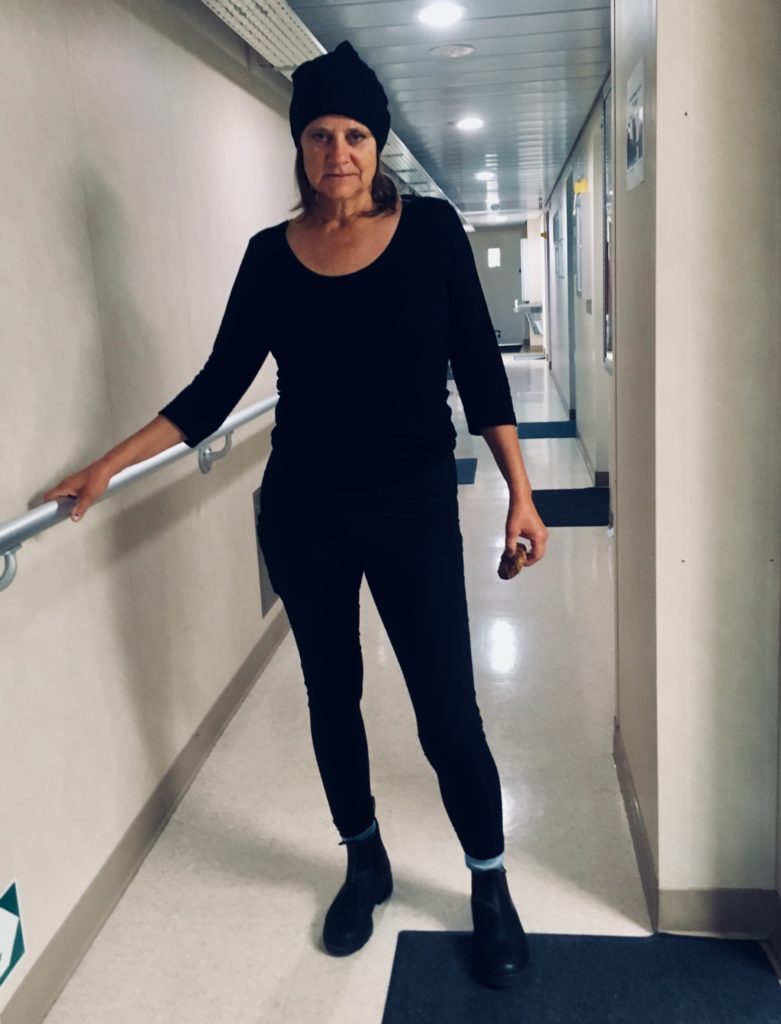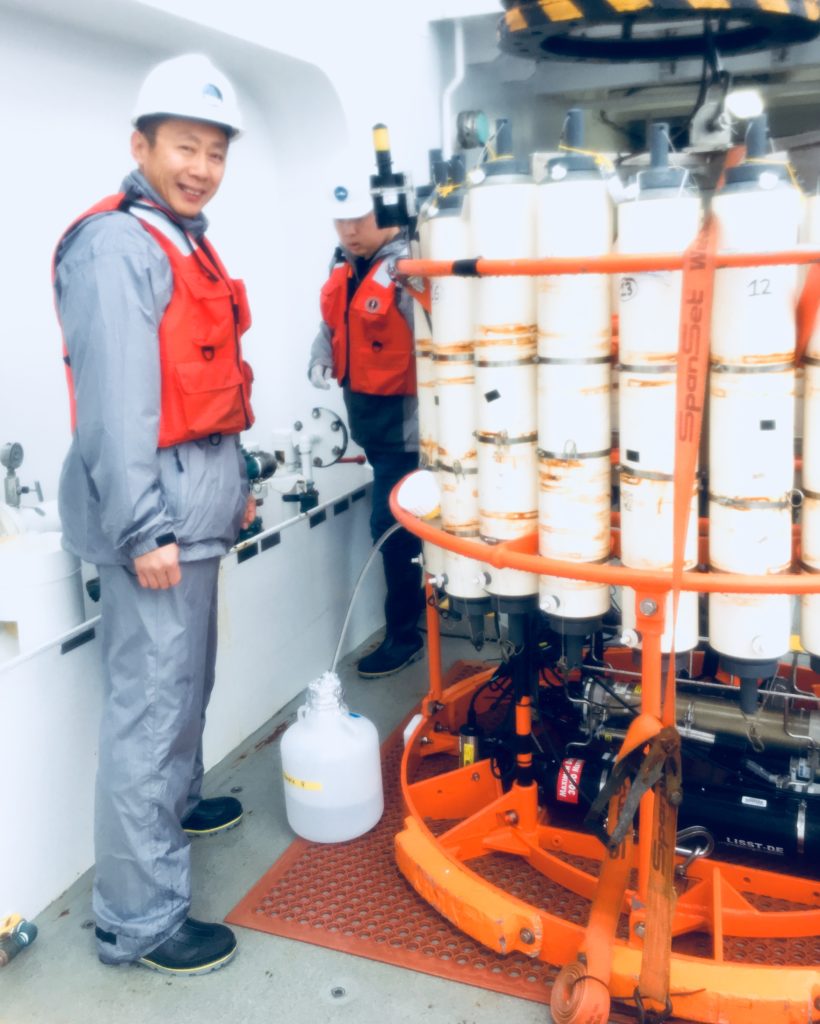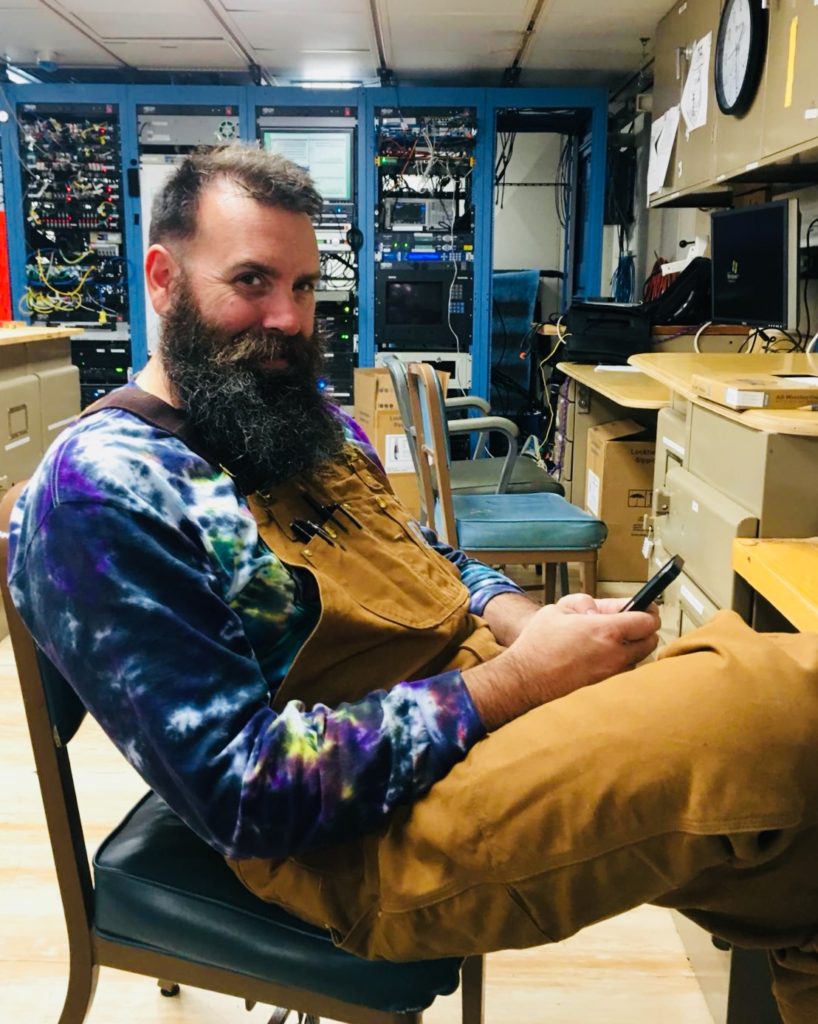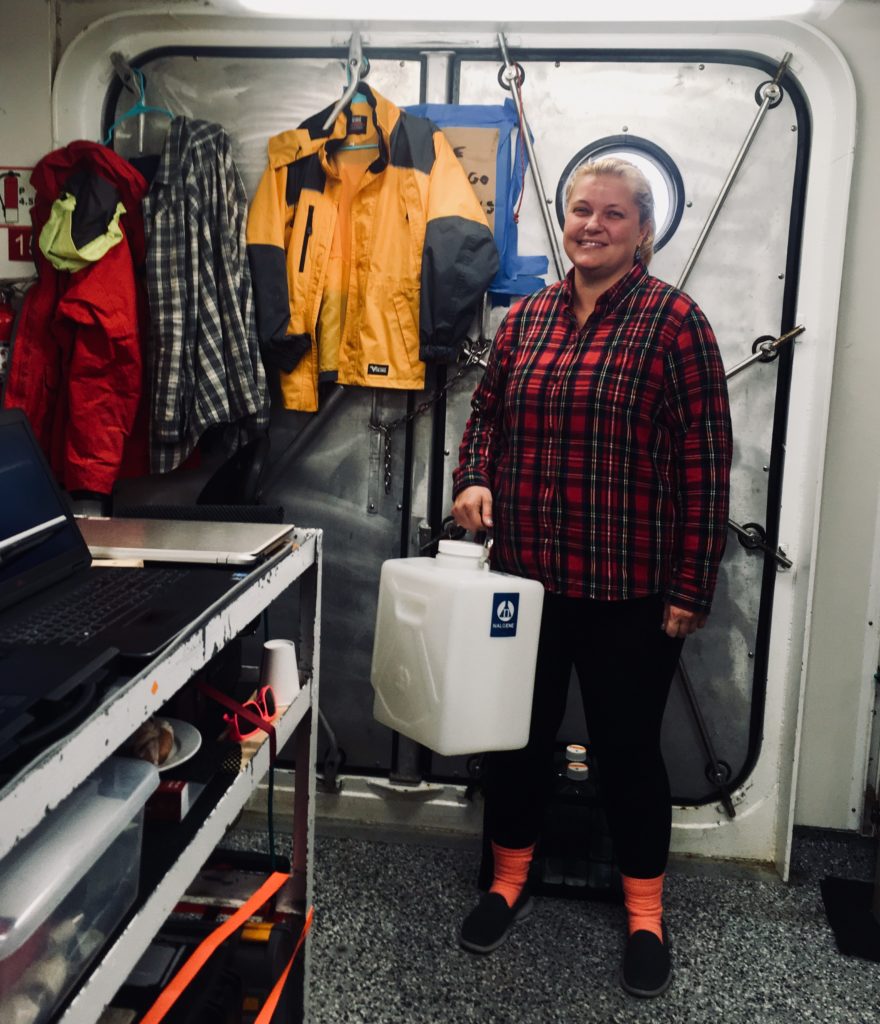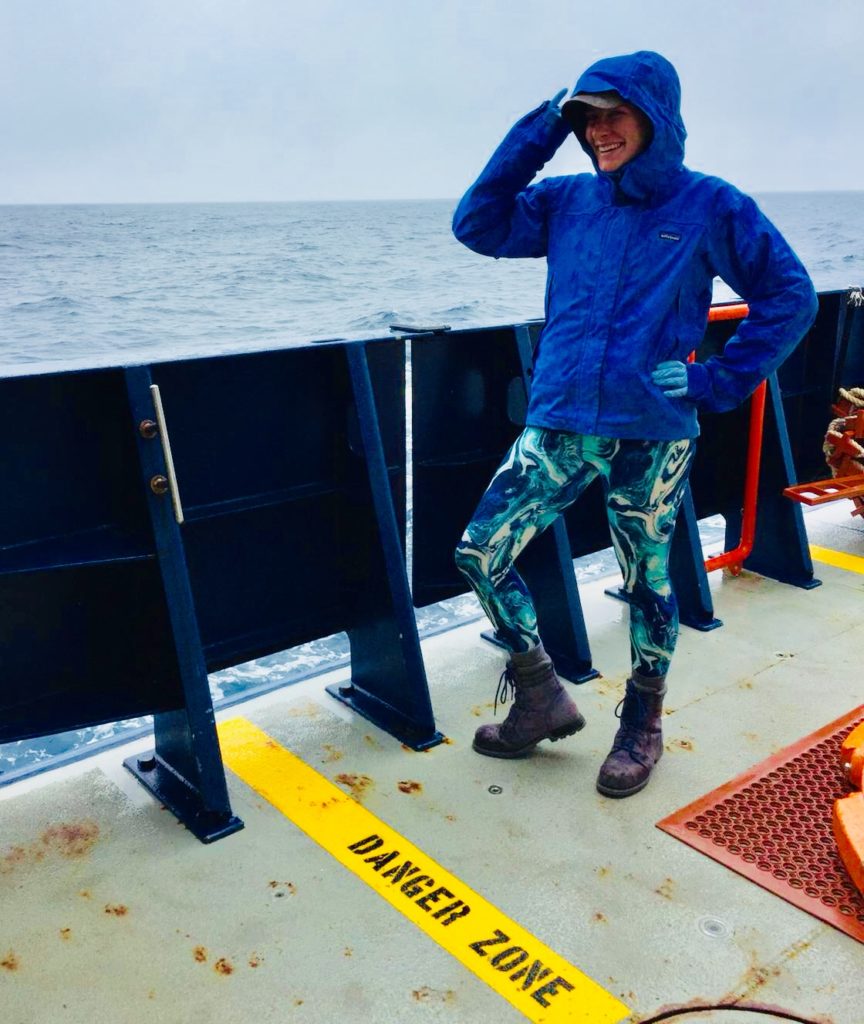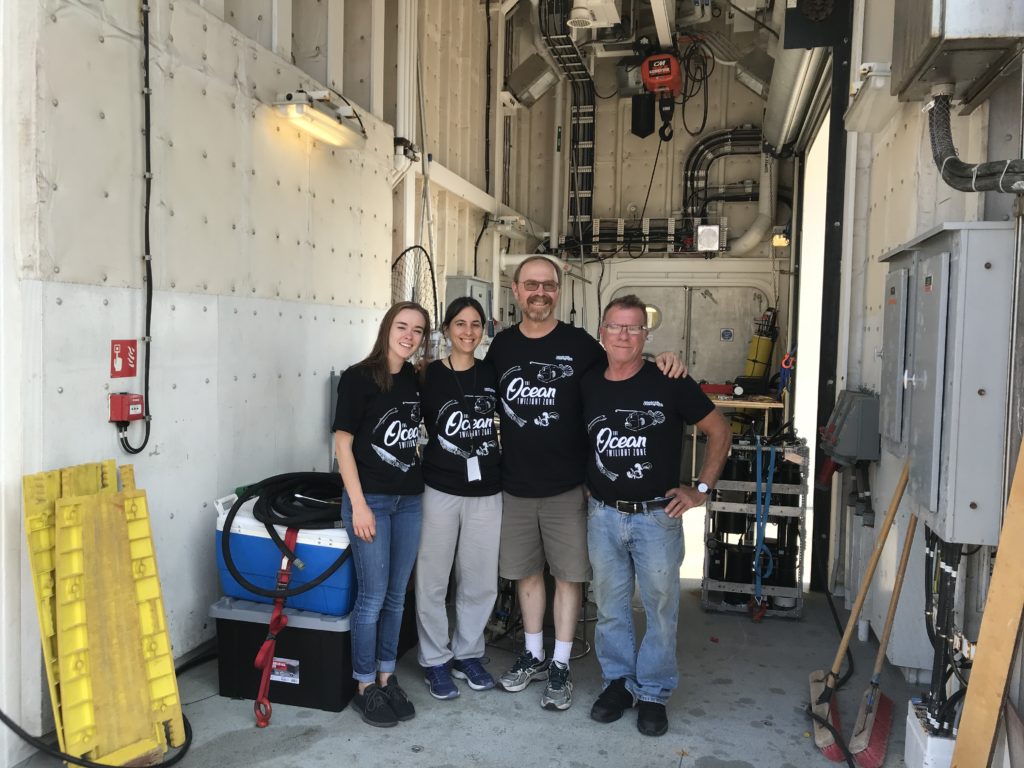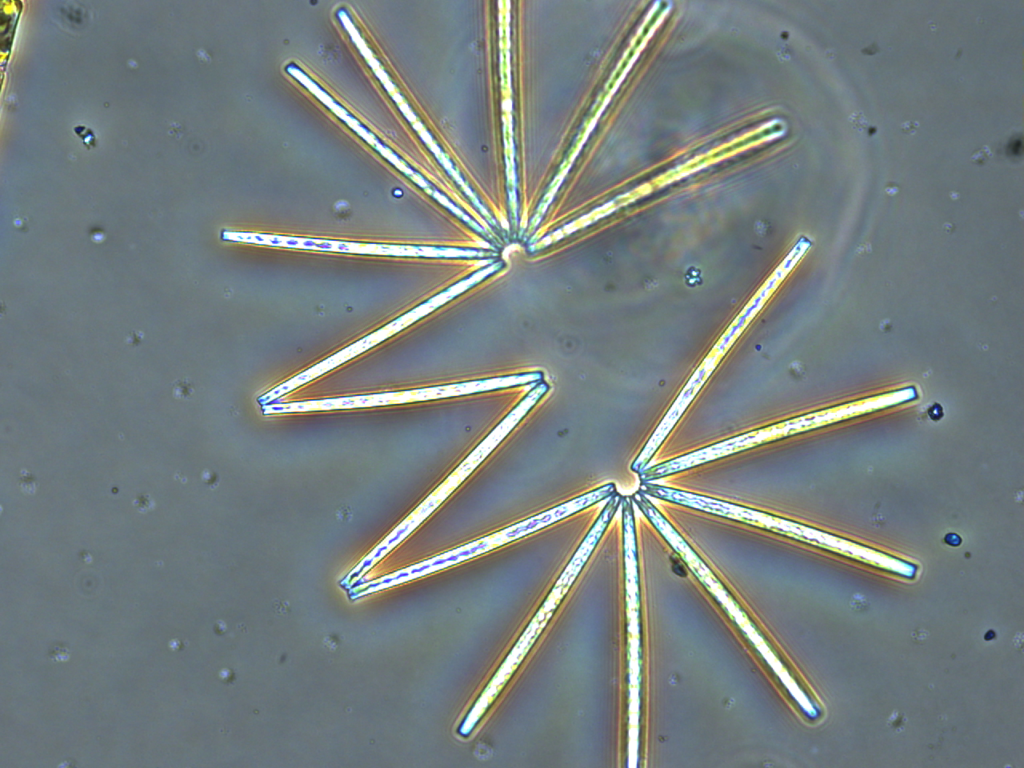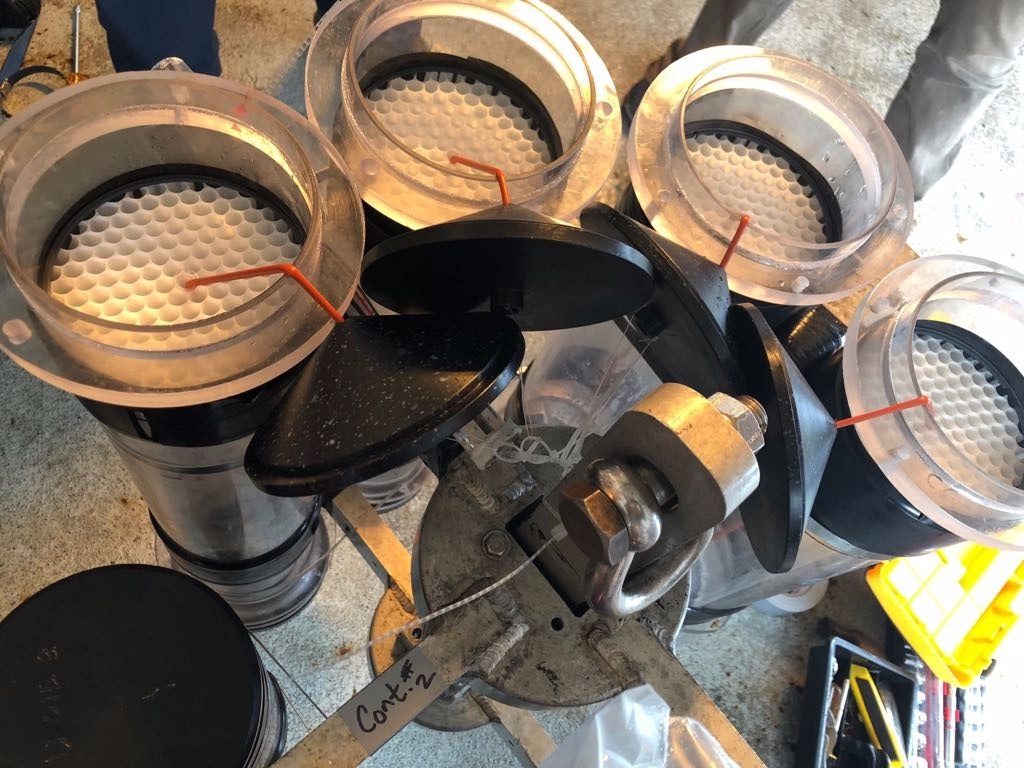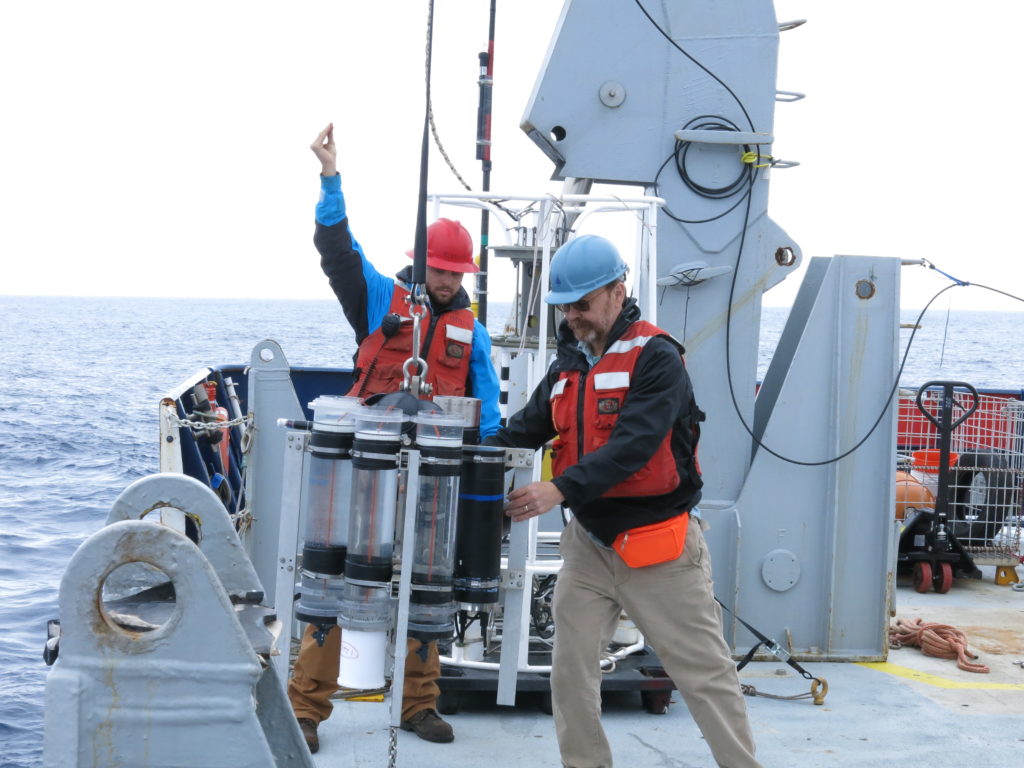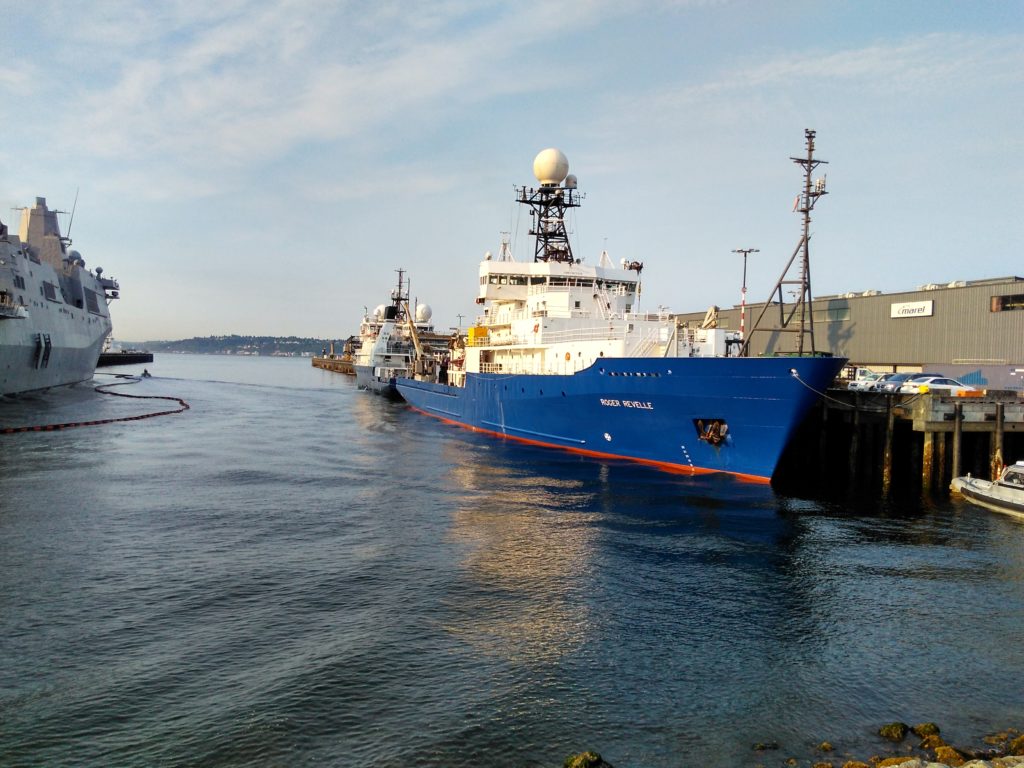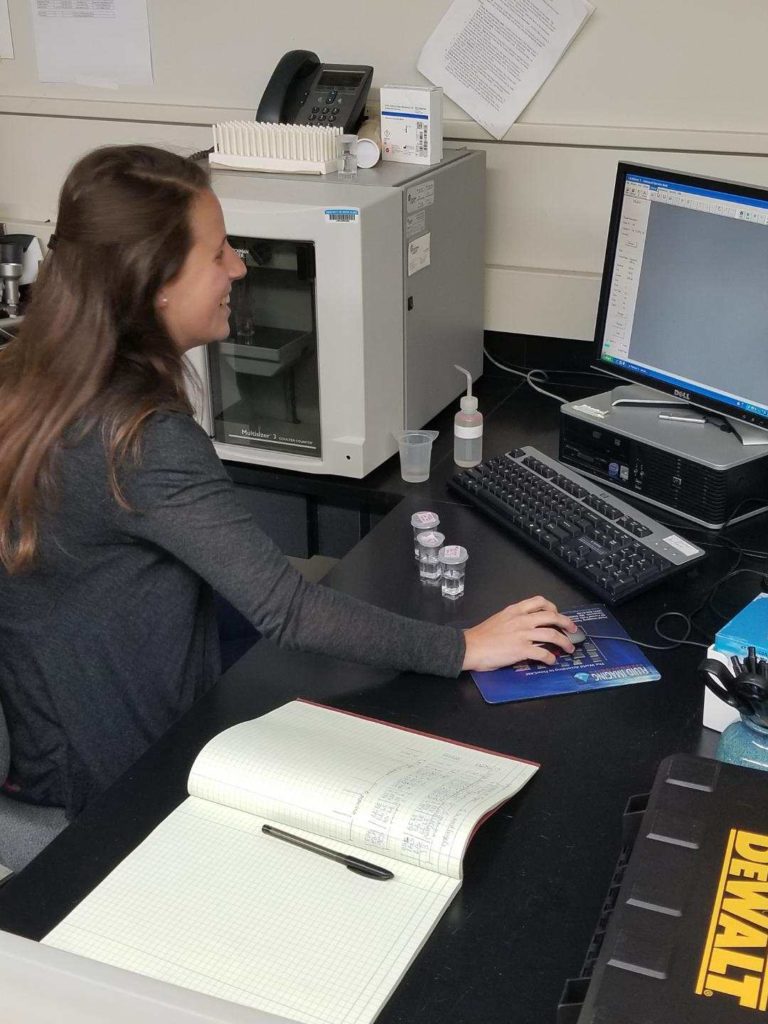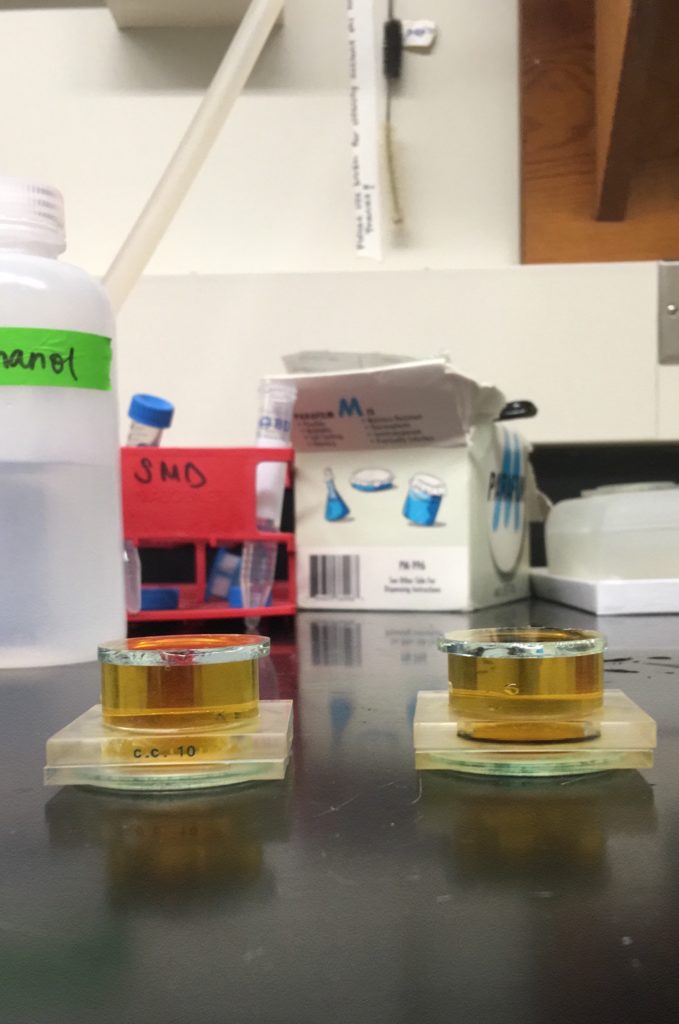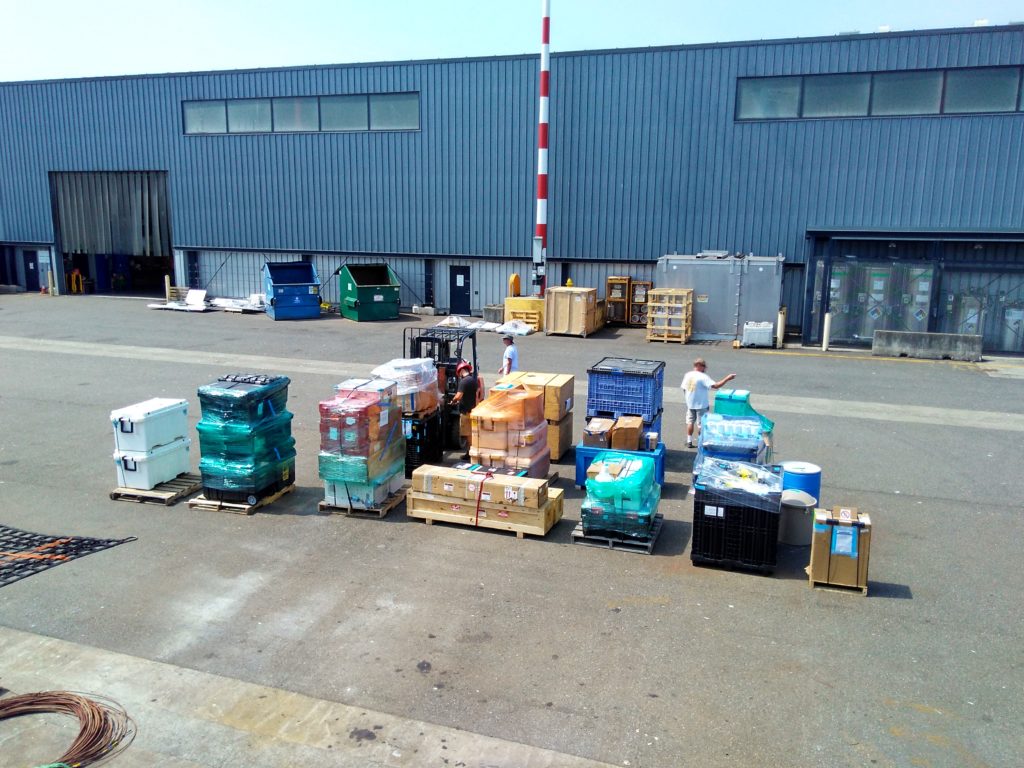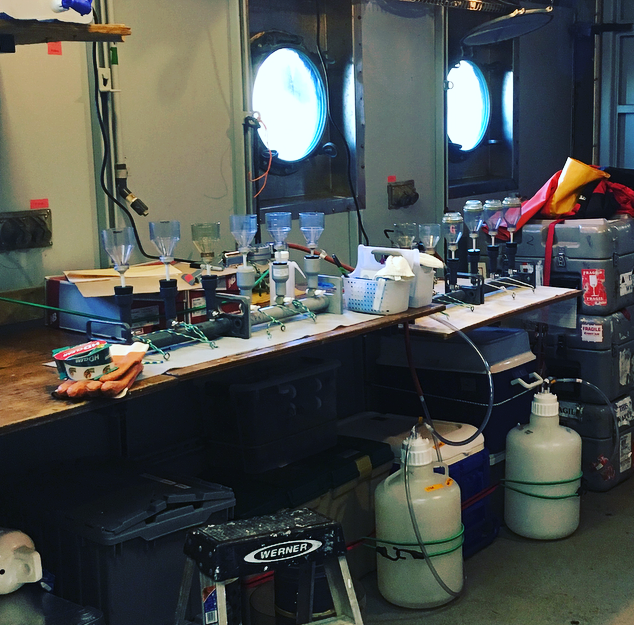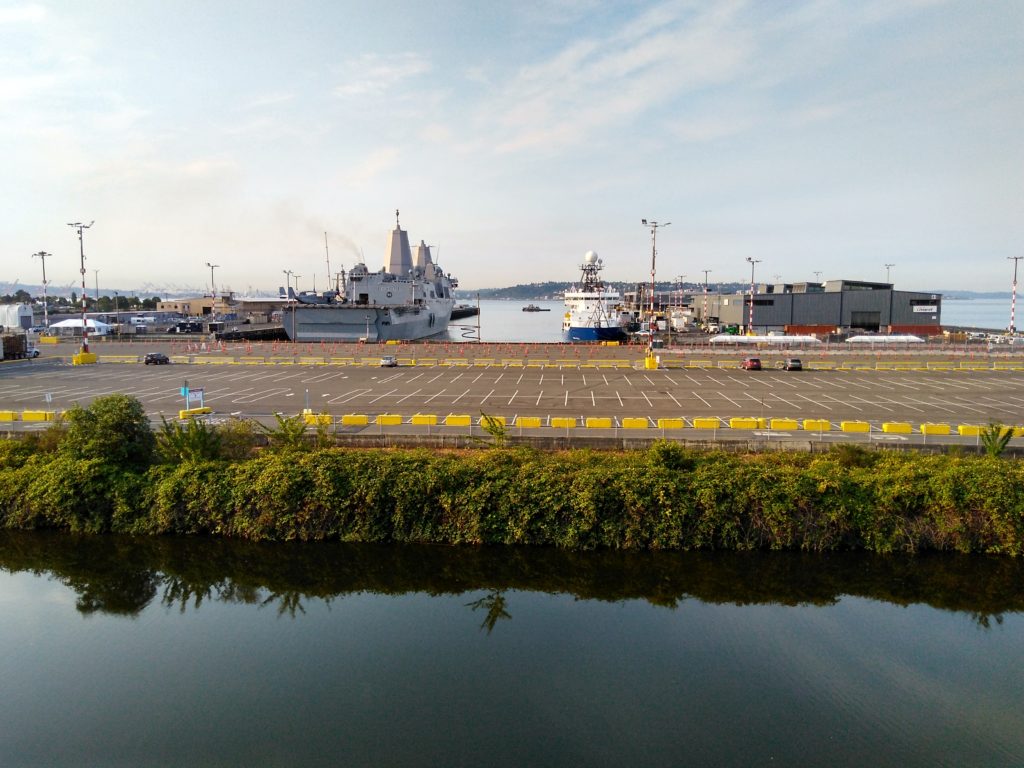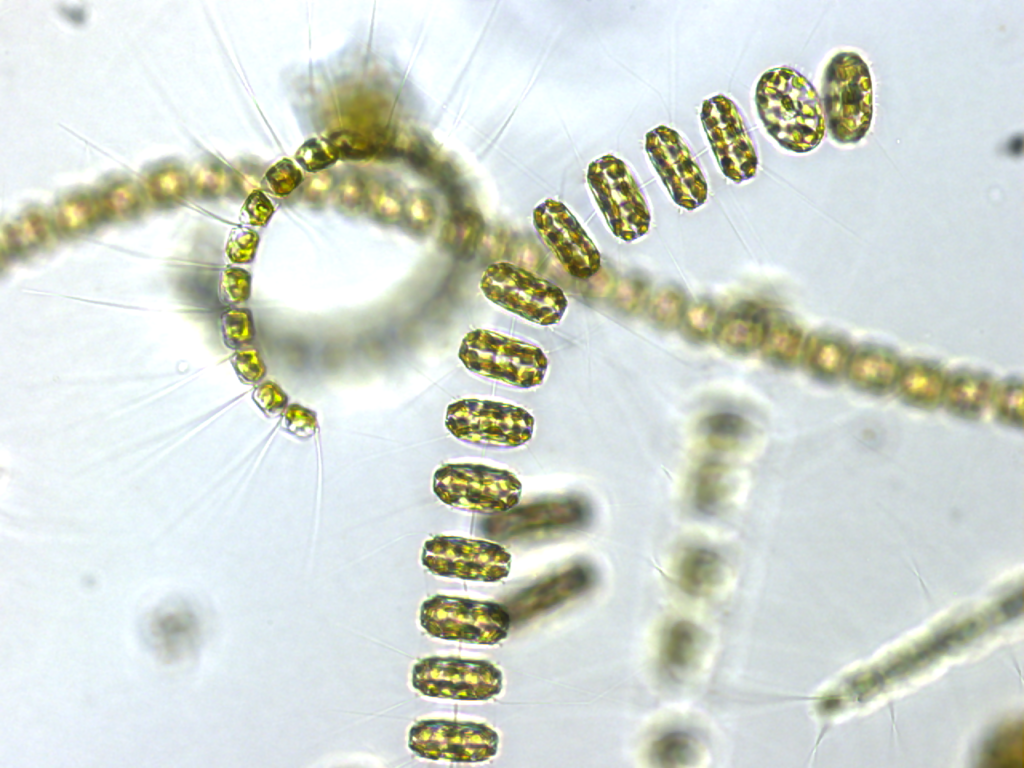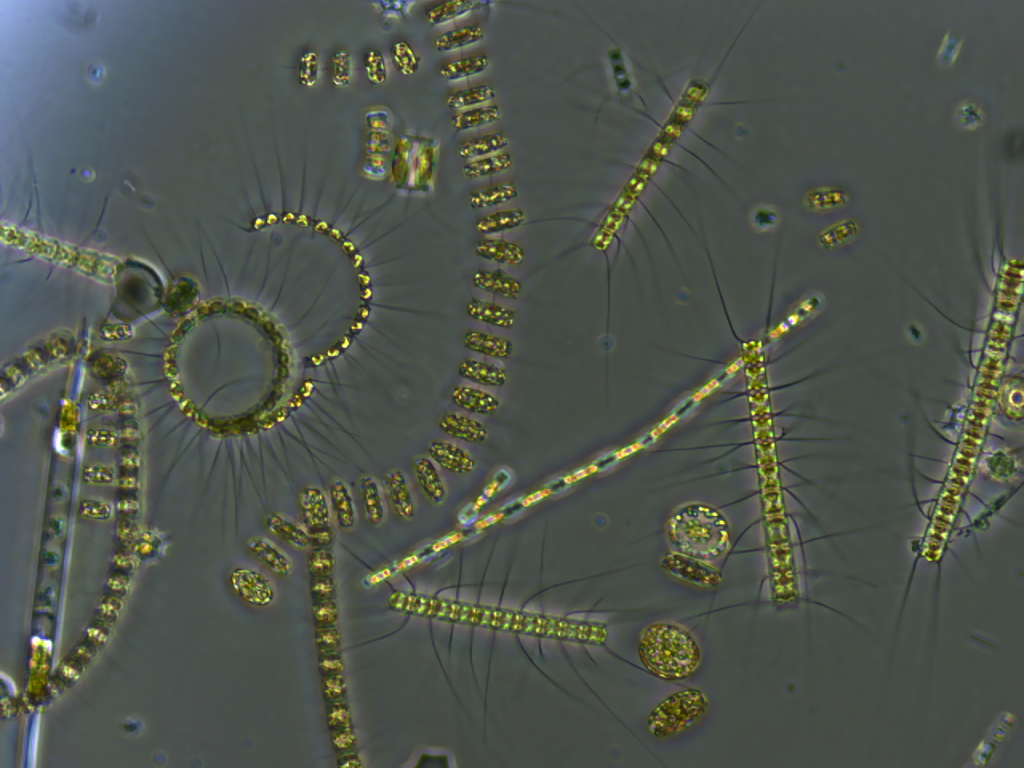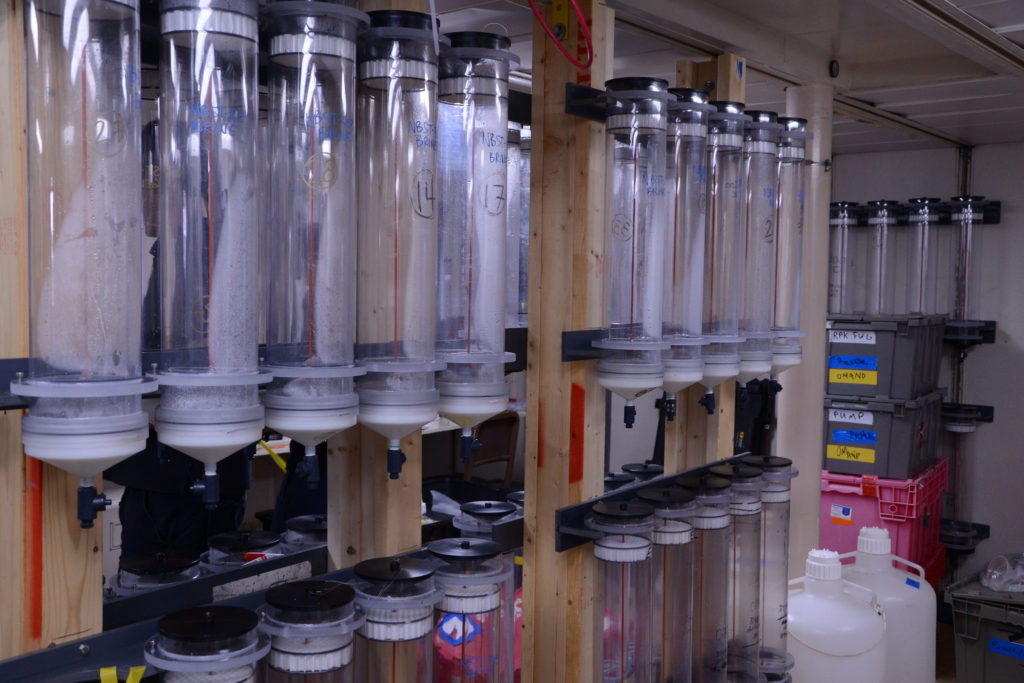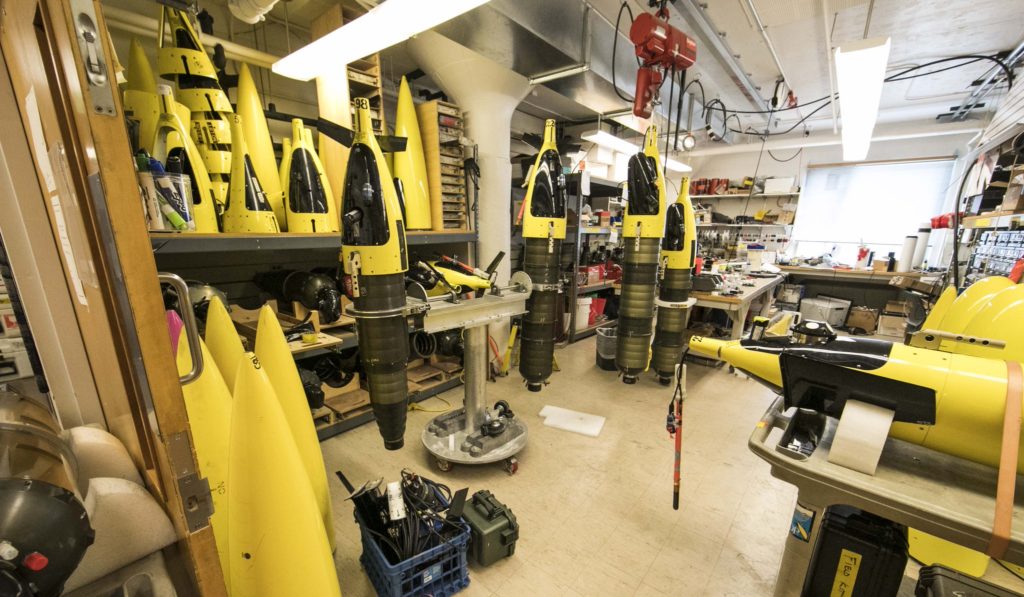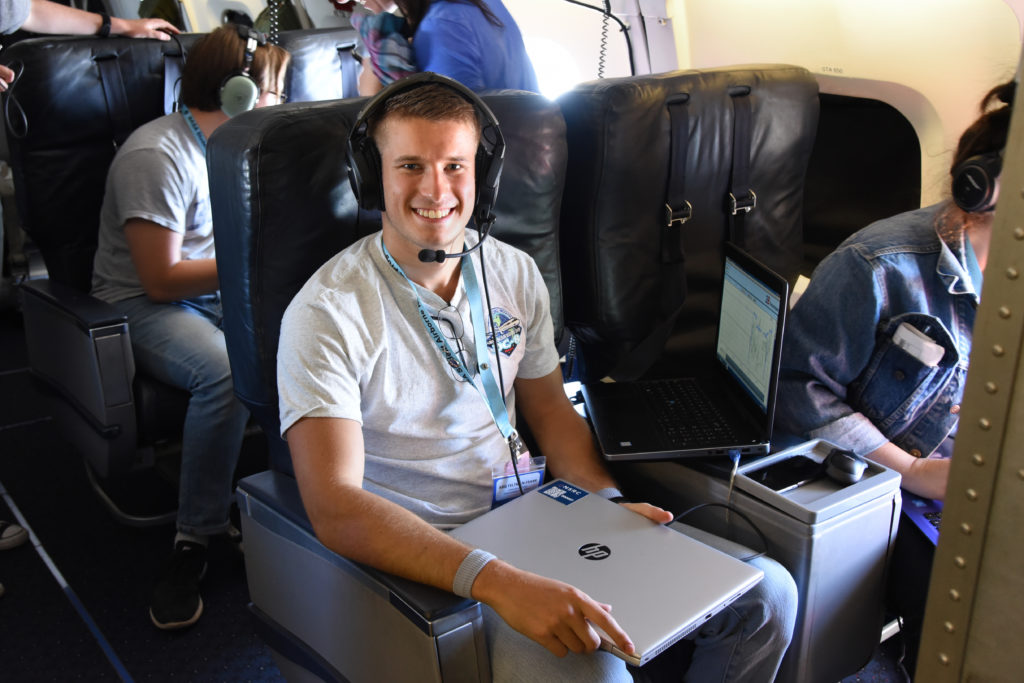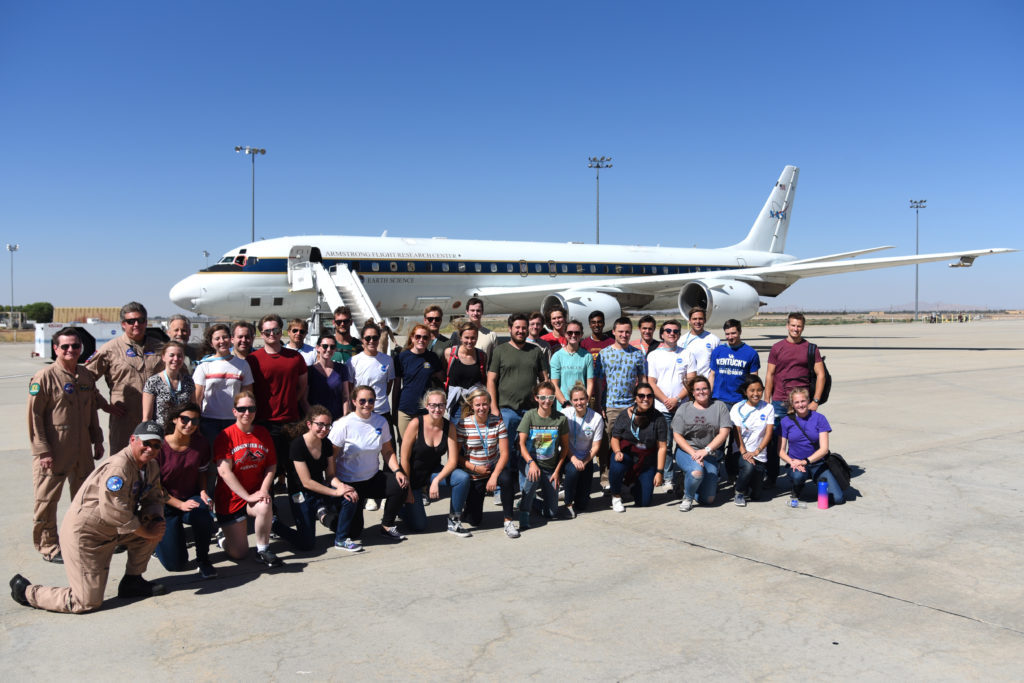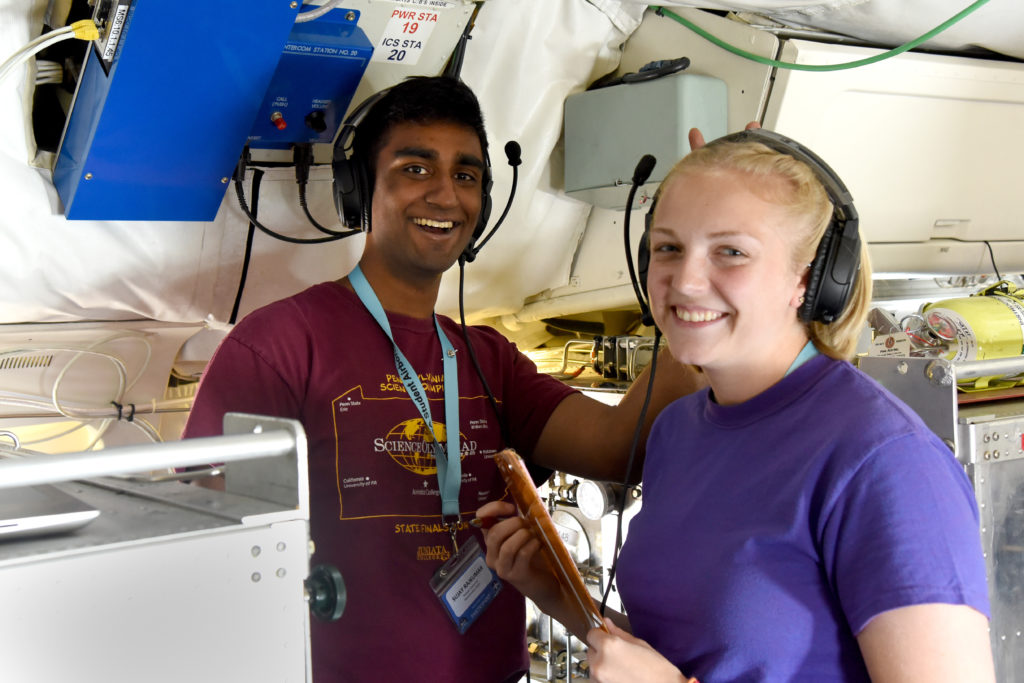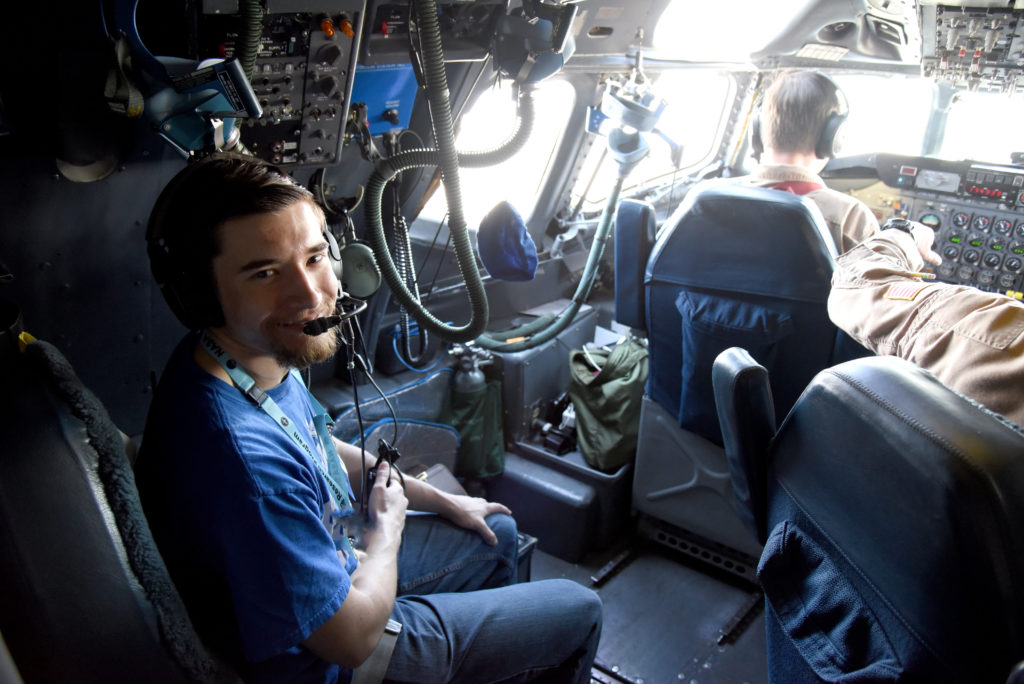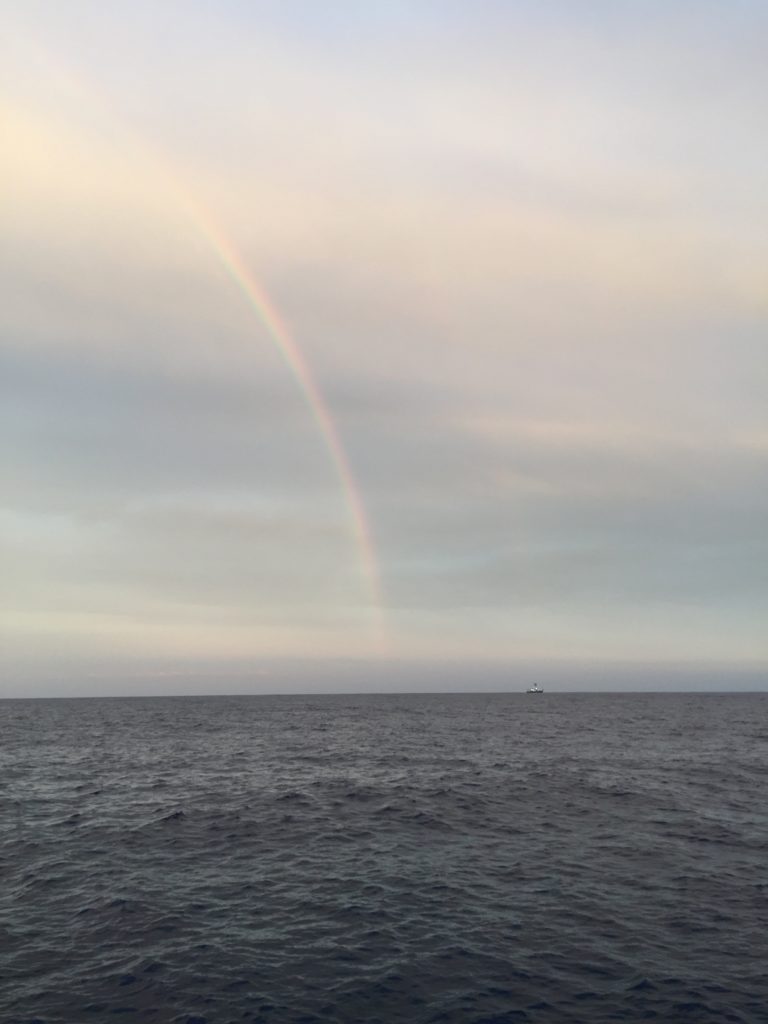
by Sasha Kramer / NORTHEAST PACIFIC OCEAN /
Sasha Kramer is a PhD student in marine science at the University of California, Santa Barbara, and is currently working aboard the R/V Sally Ride for the EXPORTS field campaign.
I’m the type of person who likes to celebrate the little things. For instance, last week was my half birthday, and you’d better believe I celebrated with some peanut butter and M&M toast for breakfast (thanks Mark and John for stocking the galley with M&Ms!!!). I even did my best to pick out mostly blue M&Ms for an extra special treat. (Eeveryone knows blue M&Ms are the best color, right? This must be a scientific fact).
You might think there are few things to celebrate aboard a research vessel, but I would say that there are abundant opportunities for celebration with the right creative approach. The first cast of our CTD water sampler? The first sighting of the Revelle from the back deck of the Ride? The first successful float deployment? The rare rainbow stretching over the gray North Pacific? The one-hundredth nutrient sample? The one-thousandth nutrient sample?? These are all chances to break out a frozen peppermint patty and party on.
As anyone who has been on a research cruise can tell you, keeping morale up can be a tricky thing. Inevitably, things will go wrong, you will be short on sleep, and you will hit the point of feeling cranky or tired or frustrated or all three at once. Given my propensity for celebration, it is maybe unsurprising that my lab mate (and officemate back at UCSB and now bunkmate on the ship) Kelsey Bisson and I not only represent the Hydro Team on the Sally Ride, we are also the self-appointed official/unofficial morale boosters aboard. We may be filtering 120-plus liters of seawater every day, but we make sure to take breaks to enjoy the little things in life…breakfast on the back deck with a view of the stormy ocean, walkie talkie calls over to the Revelle (hi Nils and Brian!), and lots of chocolate covered almonds.
So how do we plan to boost morale for the rest of the team during these 35 days at sea, you might ask? We have a few things in mind, including those frozen peppermint patties we keep in our lab van on the back deck (and Reese’s peanut butter cups and dark chocolate Hershey’s kisses… as you might imagine, a lot of feeling happy on an otherwise tough day has to do with the availability of good candy). You can find us throwing an impromptu boat-wide rave in our lab van, with the red lights turned on and the glo-sticks we packed from home cracked and glowing. Maybe you’ll spot us sampling from the CTD with our portable (waterproof!) speaker blasting. Whether it’s Paul Simon or Usher, music is also a big part of keeping morale high. For this particular activity, it’s important to read the mood of the CTD cast. CTD stands for Conductivity, Temperature, and Depth which is measured with each water sample collected. Morning optics casts lend themselves well to calmer songs and gentle singalongs (think Vance Joy); evening calibration casts are more of a scene, with bumping bass and wild dance moves (while carefully sampling, of course).
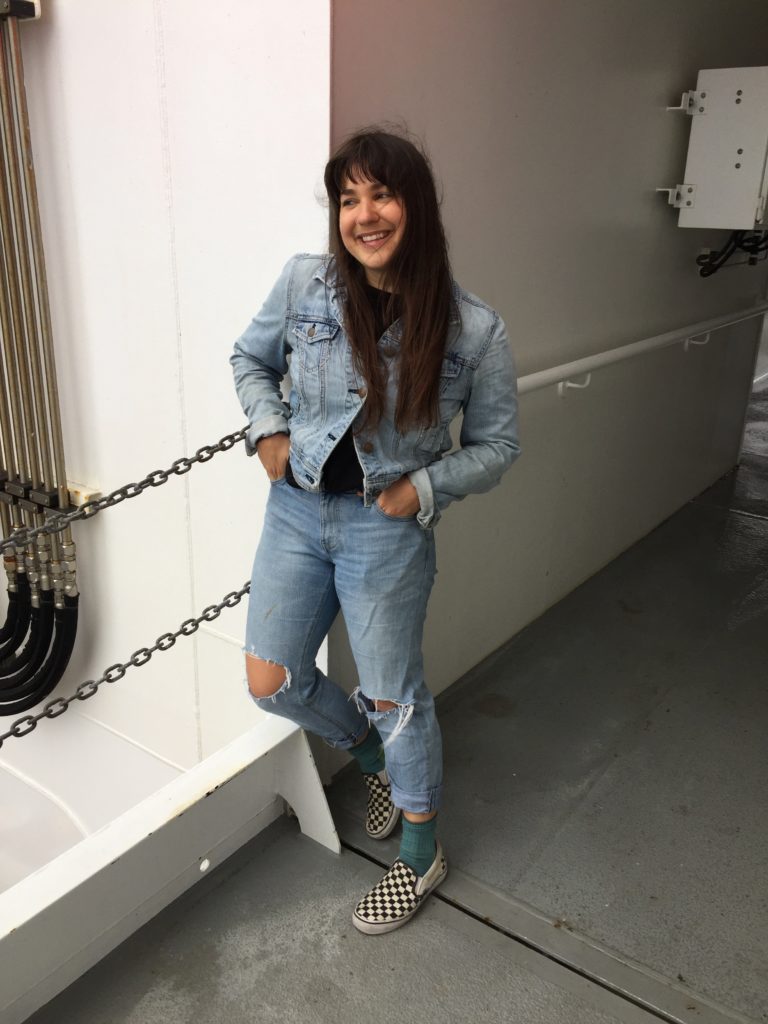
We’ve also instated Sally Ride Saturdays. We have five Saturdays together as a group, and each one represents an opportunity to have some fun together at sea. Our first Sally Ride Saturday, as we cruised through Canadian waters, was Canada Day (complete with denim on denim; see Kelsey for reference). Goth Day fell on our bad weather Saturday: black eyeliner and lipstick and nail polish (and Avril Lavigne) ensued, demonstrated excellently by some of the ladies from Team Thorium. When the wave height increases this drastically, you can’t help but feel a little emo!! Our friends aboard the Sally Ride with us can look forward to upcoming Crazy Hair Day and Technicolor Day—it’s impossible not to crack a smile at various kooky hairstyles or feel your mood brighten at the sight of someone’s electric yellow foul weather gear!
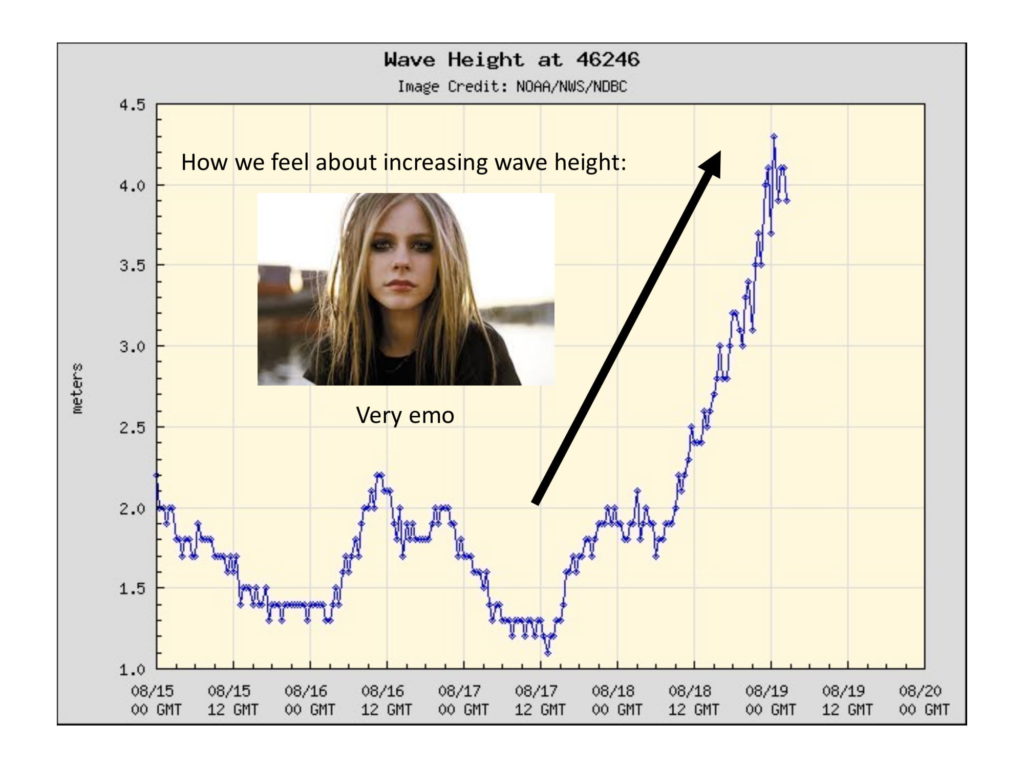
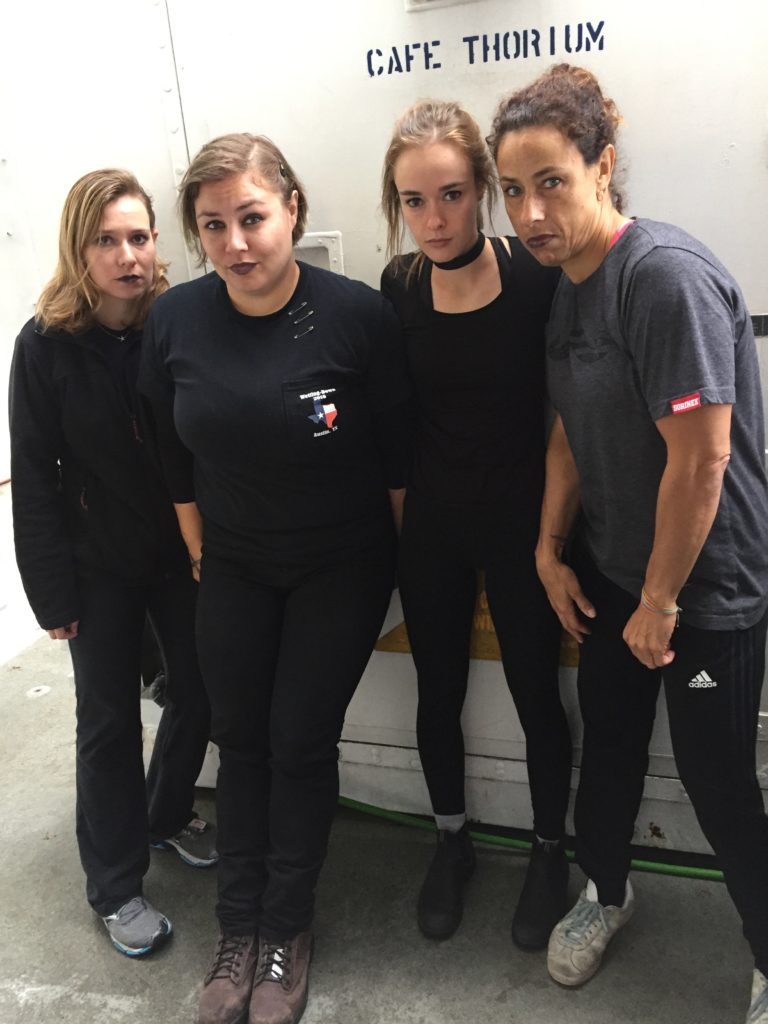
While research cruises can be challenging and tiring at times, we’re also really lucky to be out in the North Pacific together. Sally Ride Saturdays are a way to keep our spirits up when the days feel long and we haven’t seen the sun in 48+ hours (it’s pretty cloudy up here at Station P). We’re all focused on our science, but we are also part of a floating family for five full weeks. A healthy dose of (M&Ms and) fun is all part of the experience. And our friends on land are certainly not restricted from celebrating Sally Ride Saturdays too—in fact, we encourage it! Crank up the ABBA and break out the feather boas! It’s Mamma Mia Day next Saturday! You know we’ll be doing the same around the CTD.

